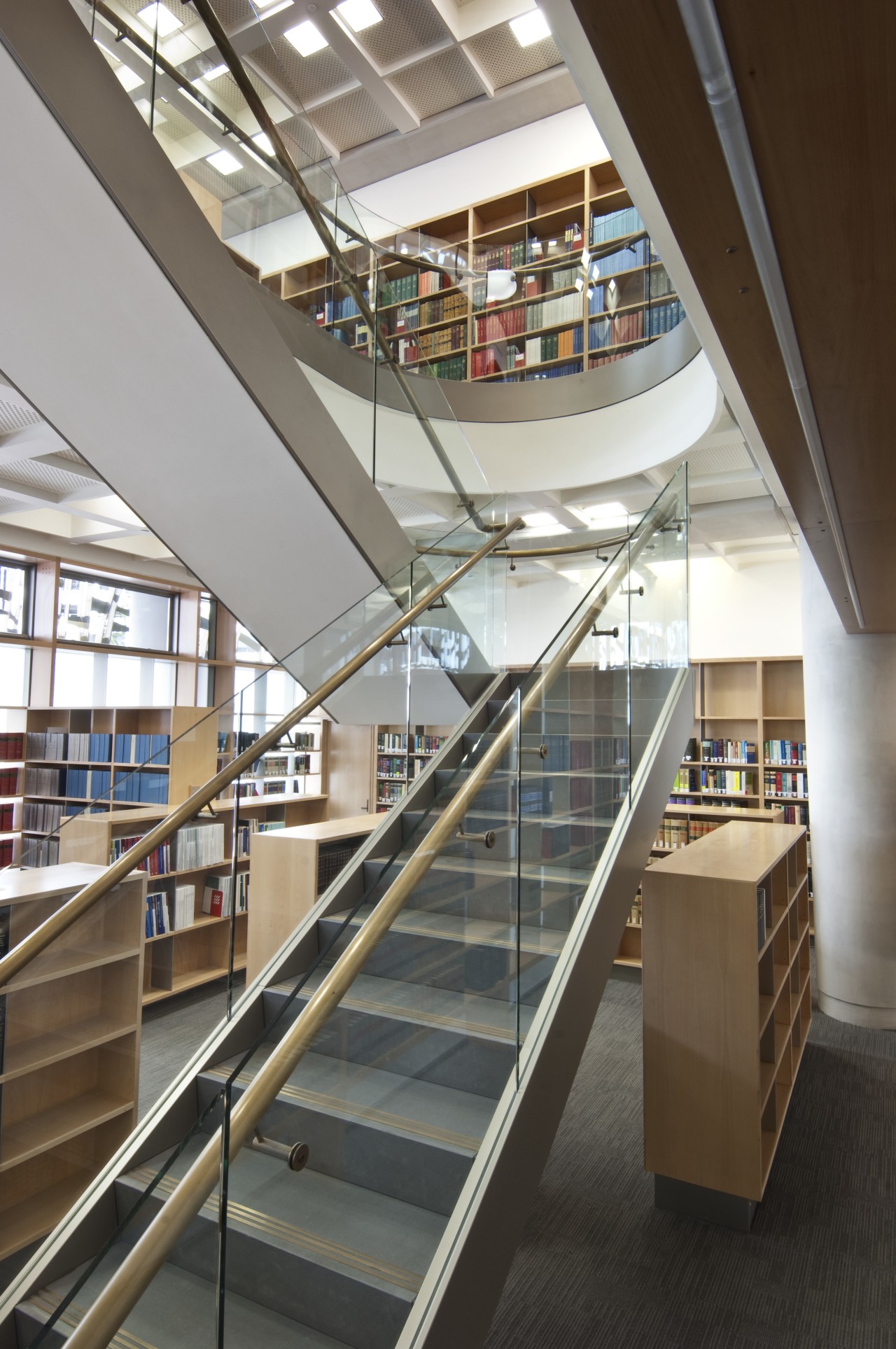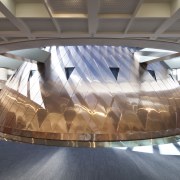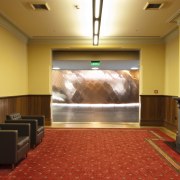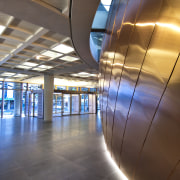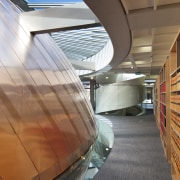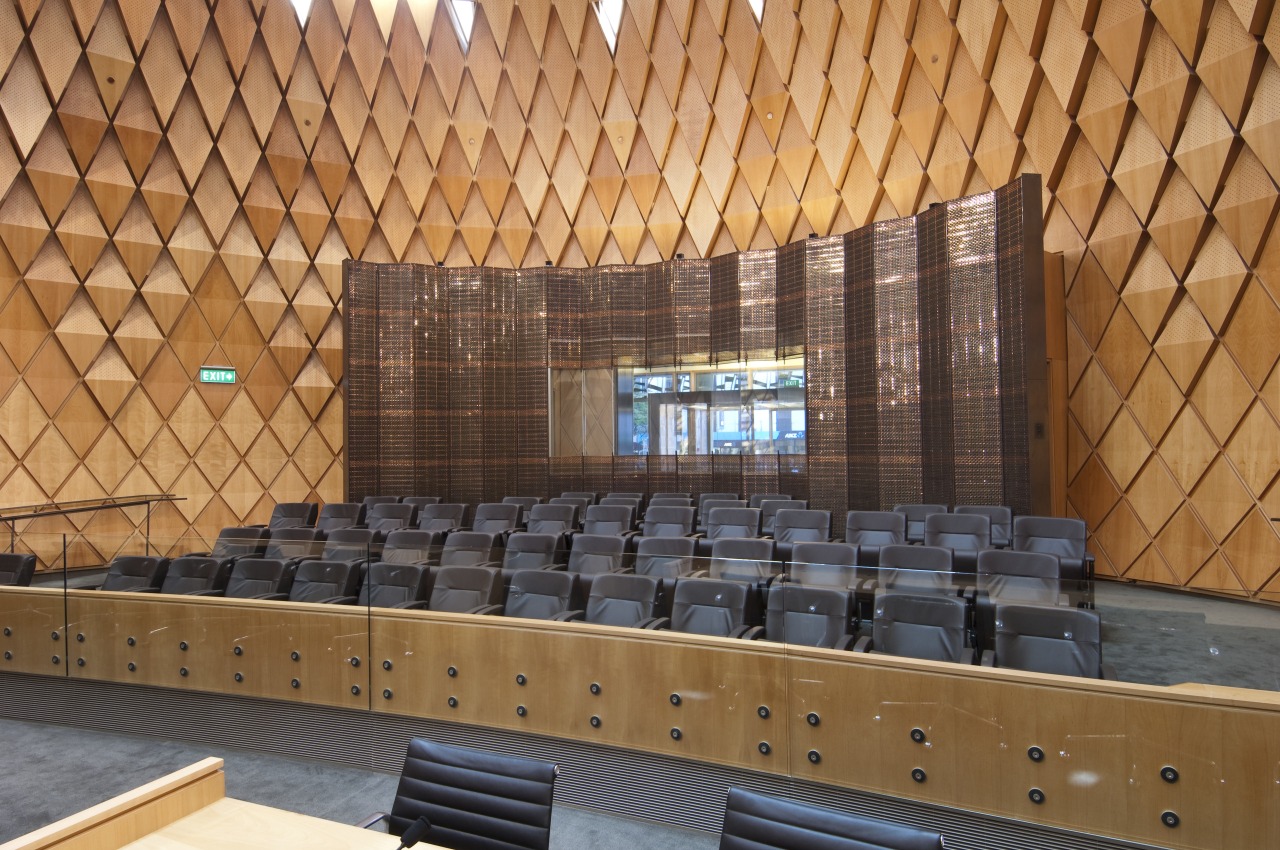Setting a precedent
The new Supreme Court of New Zealand proves the wisdom of merging the best of the old with the new the building is intrinsically linked to the historically significant old High Court
Architecture, at its best, has the ability to express abstract concepts and philosophies it's a visual language that can speak volumes about a building and its role in the community.
In days gone by, the New Zealand justice system was embodied by the historic High Court building in Wellington. Built in 1879, and the first major masonry structure to be built by the Government, the High Court had its roots in classical architecture the building's distinctive pilasters, parapets and cornices were reminiscent of the Palladian style. Its solid structure, grand proportions and sense of permanence evoked the all-encompassing power of the law and the weight of the judicial system this was not a building, or a system, to be trifled with.
Today, 130 years later, the heritage-listed High Court building has been fully restored to form part of a new complex that reflects the evolution of the New Zealand judicial system. In 2004, the Supreme Court of New Zealand replaced the Judicial Committee of the Privy Council in London, which had been the final court of appeal. As well as improving access to justice, the Supreme Court was established to recognise that New Zealand is an independent nation with its own history and traditions. As such, the court needed a new home that would reference both the history, and new-found independence of the judicial system.
It was this brief that was given to Warren & Mahoney Architecture, the company commissioned to design the new Supreme Court. Architects Roy Wilson and Bill Gregory say the firm undertook extensive consultation with the Supreme Court judiciary, Historic Places Trust, the legal profession, Wellington City Council and relevant government departments.
"Right from the start, it was established that the former High Court building would play a key role in the design its historical significance is huge," says Wilson. "The main challenge was deciding what form the new, adjacent courthouse would take."
Wilson says a number of development options were explored for the new building.
"In the end, we chose to make it small and special, rather than tall and commercial. This way, the scale of the building sits respectfully alongside the historic building. The low-density development also forms a natural margin between the open landscaping of the parliamentary precinct and the higher density CBD."

Wilson says the axial alignment of the principal spaces in the new and old buildings was a key factor in the design. As well as providing a common ground for both buildings, the alignment references the shared history of New Zealand and English law, and the goodwill settlement of treaty issues.
"The exterior bronze screen on the new building relates to the Victorian building in plan, elevation, modulation and rhythm," says Gregory. "The design of the screen, which was made from recycled scrap metal, was influenced by native pohutukawa trees the pohutukawa is a Maori symbol of strength, protection and longevity. The windblown form of these trees in the landscape is developed into a rhythmic pattern on the screen, which gives form, privacy, shelter and shading to the interior."
The new building stands on a dark basalt-clad plinth within a shallow reflecting pool. Beyond the entry, the courtroom itself is contained within a separate freestanding, copper-clad ovoid structure.
"Making the courtroom a separate structure and shape stresses the Supreme Court's independence and autonomy," says Gregory. "The processes and spaces are, however, visible and open to the public, making the court more accessible."
Both the exterior and interior of the courtroom incorporate natural, yet refined materials that will gather a patina as they age. While the exterior of the elliptical volume is clad in copper, the interior features 2294 panels of silver beech timber, with both smooth and articulated surfaces catering to the differing acoustic requirements.
"The panelling of the courtroom was influenced by the spiral pattern of a kauri cone, and the idea of such a seed being a link between the new and old legal systems in New Zealand," says Gregory. "The courtroom also features vertical folded walls of woven metal, copper and bronze, which reference traditional Maori woven tukutuku panels."
A library, administration areas and judges' chambers (level two) are positioned around the perimeter of the building, with a large void between these areas and the centrally placed courtroom. The interior design of these spaces was strongly influenced by the need for library and book storage there is 2.5km of shelving in the building. All walls of the upper circulation space are lined with bookshelves and the judges' chambers are also extensively fitted with built-in joinery.
Wilson says, wherever possible, sustainable design principles were followed. The new building features double glazing and energy-efficient lighting and air-quality control systems. On the exterior, the bronze screen provides solar shading, glare control and weather protection. Solar panels provide water heating for the complex.
"We also ensured that the native timber used in the construction came from sustainable sources."
The design and construction of the new Supreme Court building was just part of the overall project.The existing old High Court building, which had fallen into disrepair after being vacant for 14 years, was extensively restored to provide an additional courtroom and ancillary administration areas. The restored No 1 Courtroom is now used for civil proceedings, as well as educational and ceremonial purposes.
The project included base isolation work and significant strengthening to provide the required seismic protection, and the full restoration of the interior.
"The work was detailed with guidance from a conservation report prepared by conservation architect Chris Cochran, and from Warren and Mahoney's experience of the base isolation work undertaken for the Parliament Buildings project," says Wilson. "Many elements of the building have been faithfully re-created following the destruction or removal of the original fabric over time due to earthquake risk or decay."
Key features of the interior that have been fully restored include historically significant wood panelling, the double staircase to the gallery, and the judge's bench and canopy.
"While the technologies and trades involved in the two buildings are quite different, each is truly representative of its time," says Wilson. "This combination, along with the architectural and symbolic relationship of the two buildings, provides a richness that helps contribute to the successful outcome."
Story by: Trendsideas
Home kitchen bathroom commercial design
